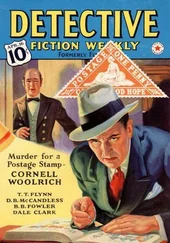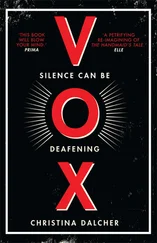But despite the excellent qualities which Holmes shared with his creator, Watson’s description of him gives a picture of a somewhat unlikely hero. In enumerating the limits of his flatmate’s interests, Watson states that his knowledge of literature was nil, although he appeared to know every detail of every horror perpetrated in the century and his reading of sensational literature was immense. In the Victorian controversy between the somewhat despised “sensational business” and the reputable straight novel, there is no doubt where Holmes’s interests lay. It was his declared policy not to acquire any knowledge which was not useful to him or would not bear upon his job. He was an expert boxer and swordsman and had a good practical knowledge of the law and of poisons, including belladonna and opium. Although exhaustively energetic when engaged on a case, he spent days lying on a sofa without uttering a word, regularly injected himself with cocaine, and with his erratic lifestyle and habit of firing off his revolver in the sitting-room to pattern the wall with bullet holes must have been an uncomfortable and sometimes dangerous companion for his friend and flatmate Dr. Watson. Mrs. Hudson was certainly a most accommodating landlady.
A moment of Holmes-like deduction suggests that, if there is a 221B, there must be a 221A, and possibly a 221C. What did the tenants above and below think of having their peace disturbed by Sherlock Holmes’s patriotic shooting practice or the mysterious and odd people who regularly came to his door? And why did such a brilliant and successful investigator, called on by the rich and famous, able to afford a special train to take Dr. Watson and himself to the scene of crime, need to share lodgings in what seems to be essentially a rooming house? We are told by Dr. Watson in A Study in Scarlet that the accommodation at 221B Baker Street “consisted of a couple of comfortable bedrooms and a single large airy sitting-room, cheerfully furnished and illuminated by two broad windows.” So desirable in every way were the apartments, and so moderate the terms when divided between the two men, “that the bargain was concluded upon the spot.” We also learn that the sitting-room was Sherlock Holmes’s office and the place where he received his visitors, which meant that Watson had to be banished to his bedroom when anyone arrived on business, which was not infrequently. It hardly seems a satisfactory arrangement and I am not surprised that eventually, despite the moderate cost, Watson moved out. And was this really a feasible arrangement for Sherlock Holmes, who couldn’t have been a poor man? One of his clients was the King of Sardinia, and noblemen as well as the humble workers of the world came to that sitting-room for help. In “The Adventure of the Priory School,” Holmes finds Lord Saltire, the son of the Duke of Holdernesse, who was missing from his preparatory school, and receives as his fee a cheque for ten thousand pounds-in those days a small fortune. He folds up the cheque and places it carefully in his notebook with the comment, “I am a poor man.” But poor he certainly was not. Was he perhaps a secret philanthropist who used his income from prosperous clients to subsidise the poor? He couldn’t have spent money on a main and more luxurious home, since his frequent absences to return to it would undoubtedly have been commented upon by Dr. Watson. And what happened to Dr. Watson’s dog? Before moving into 221B he confesses that he keeps a bull pup, but we never hear again about this animal. Did Mrs. Hudson put down her foot, or was the unfortunate puppy a victim of Sherlock Holmes’s revolver practice? But for me the greater mystery has to be the missing money. I have no doubt, however, that all will later be explained to me by members of the worldwide Sherlock Holmes societies, by whom no detail of Holmes’s life or cases, and no discrepancies in the plots, have been left unexamined.
In addition to his four full-length novels- A Study in Scarlet, The Sign of Four, The Hound of the Baskervilles and The Valley of Fear -Conan Doyle published five collections of short stories featuring his hero. With such a large output, the quality is inevitably sometimes uneven. A number of the stories are frankly incredible, an example being one of the most popular and best known, “The Speckled Band.” It is also among the most terrifying. Here we encounter the most evil of Holmes’s adversaries, Dr. Rylott, who from his first entrance in 221B Baker Street reveals his strength and brutality. As a doctor, he surely had the means to dispose of his step-daughter with expedience and safety, but the method he employed somehow seems a wanton wish on his part to make the investigation as complicated as possible for Holmes, rather than a rational plan to commit a successful murder. There are other inconsistencies in a number of the stories, but I have some sympathy with the judgement of the late novelist and critic Julian Symons that we should not fall into the error of preferring technical perfection to brilliant storytelling, and that if one were choosing the best twenty short detective stories ever written, at least half a dozen would feature Sherlock Holmes.
Holmes’s lasting attraction also derives from the setting and atmosphere of the stories. We enter into that Victorian world of fog and gaslight, the jingle of horses’ reins, the grind of wheels on cobblestones and the shadow of a veiled woman climbing the stairs to that claustrophobic sanctum at 221B Baker Street. Such is the power of the writing that it is we, the readers, who conjure up this enveloping miasma of mystery and terror. The Sign of Four mentions a dense, drizzly fog, but the weather is rarely described except briefly in phrases like “a bleak windy day towards the end of March,” or “a close rainy day in October.” We provide what our imaginations need, including the detail of the small sitting-room, the untidiness, the initials VR in bullet marks in the wall and the smell of Holmes’s pipe. We may not always believe in the details of the plot, but we always believe in the man himself and the world he inhabits.
And the magic has remained. We readers, in our fidelity to Holmes, have a greater respect for him than had his creator. Conan Doyle was a man of high literary ambition and, although he was too good a craftsman not to take care over the Holmes stories, he didn’t take them seriously and had every intention of killing off his hero when the first series ended, so that he could devote himself to what he saw as more prestigious literature. It was at the end of the second series of stories that he decided to kill both Holmes and his adversary, Moriarty, by plunging them over the Reichenbach Falls. But Holmes was not so easy to kill and by public demand was reinstated, although some readers may feel that the great detective was never quite the same man after the Reichenbach experience. Conan Doyle could not resist the public clamour for Holmes to be saved, nor say no to the enormous fees he was earning. But he still deplored the egregious success of his detective and wrote to his friend, “I have had such an overdose of him that I feel towards him as I do towards pâté-de-foie-gras , of which I once ate too much, so that the name of it gives me a sickly feeling to this day.” But the readers did, and indeed still do, feast on the Holmes short stories not with nausea but with renewed appetite.
Another Victorian whose influence and reputation have been almost as great, in my view deservedly, was as prolific as Conan Doyle but very different both as a man and as a writer. Gilbert Keith Chesterton, who was born on Campden Hill in London in 1874 and died in 1936, can be described in terms which are hardly ever used of a writer today: he was a man of letters. All his life he earned his living by his pen and he was as versatile as he was prolific, gaining a reputation as a novelist, essayist, critic, journalist and poet. Much of this output, particularly on social, political and religious subjects, has proved ephemeral, but a few of his poems, including “The Donkey” and “The Rolling English Road,” continue to appear in anthologies of popular verse. But he is chiefly remembered as one of the most brilliant writers of the short detective story and for his serial detective, the Roman Catholic priest Father Brown. The Innocence of Father Brown was published in 1911 and was followed by four further volumes; the last, The Scandal of Father Brown , appeared in 1935. G. K. Chesterton converted to Roman Catholicism in 1922, and his faith became central to his life and work. His fictional priest was based on his friend Father John O’Connor, to whom The Secret of Father Brown , published in 1927, was dedicated.
Читать дальше












